Micafungin sodiumInhibitor of β-(1,3)-D-glucan synthesis;fungicide CAS# 208538-73-2 |
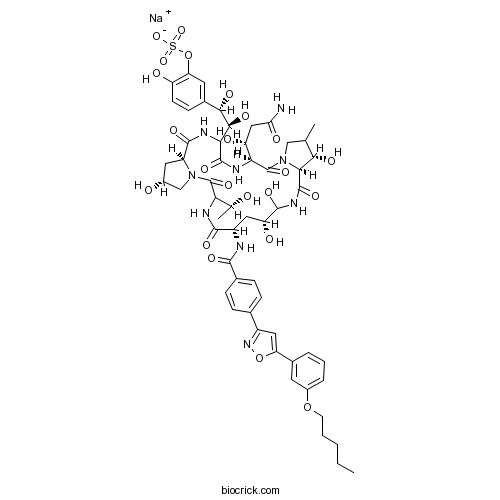
- Mibefradil dihydrochloride
Catalog No.:BCC1749
CAS No.:116666-63-8
- Cilnidipine
Catalog No.:BCC1083
CAS No.:132203-70-4
- Pregabalin
Catalog No.:BCN2175
CAS No.:148553-50-8
- NNC 55-0396
Catalog No.:BCC1803
CAS No.:357400-13-6
- NP118809
Catalog No.:BCC1807
CAS No.:41332-24-5
Quality Control & MSDS
3D structure
Package In Stock
Number of papers citing our products
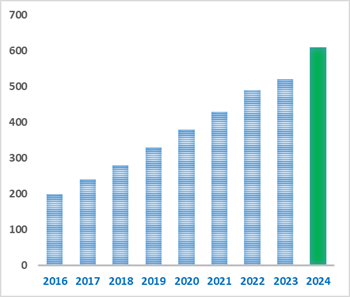
| Cas No. | 208538-73-2 | SDF | Download SDF |
| PubChem ID | 23695839 | Appearance | Powder |
| Formula | C56H71N9NaO23S+ | M.Wt | 1293.26 |
| Type of Compound | N/A | Storage | Desiccate at -20°C |
| Synonyms | FK 463 | ||
| Solubility | DMSO : ≥ 32 mg/mL (24.76 mM) *"≥" means soluble, but saturation unknown. | ||
| SMILES | CCCCCOC1=CC=CC(=C1)C2=CC(=NO2)C3=CC=C(C=C3)C(=O)NC4CC(C(NC(=O)C5C(C(CN5C(=O)C(NC(=O)C(NC(=O)C6CC(CN6C(=O)C(NC4=O)C(C)O)O)C(C(C7=CC(=C(C=C7)O)OS(=O)(=O)[O-])O)O)C(CC(=O)N)O)C)O)O)O.[Na+] | ||
| Standard InChIKey | DDVWCESGUGLBJI-OZMKZJPFSA-M | ||
| Standard InChI | InChI=1S/C56H71N9O23S.Na/c1-4-5-6-16-86-32-9-7-8-29(17-32)39-21-33(63-87-39)27-10-12-28(13-11-27)49(75)58-34-20-38(70)52(78)62-54(80)45-46(72)25(2)23-65(45)56(82)43(37(69)22-41(57)71)60-53(79)44(48(74)47(73)30-14-15-36(68)40(18-30)88-89(83,84)85)61-51(77)35-19-31(67)24-64(35)55(81)42(26(3)66)59-50(34)76;/h7-15,17-18,21,25-26,31,34-35,37-38,42-48,52,66-70,72-74,78H,4-6,16,19-20,22-24H2,1-3H3,(H2,57,71)(H,58,75)(H,59,76)(H,60,79)(H,61,77)(H,62,80)(H,83,84,85);/q;+1/p-1/t25?,26-,31-,34+,35+,37-,38-,42?,43+,44?,45+,46+,47+,48+,52?;/m1./s1 | ||
| General tips | For obtaining a higher solubility , please warm the tube at 37 ℃ and shake it in the ultrasonic bath for a while.Stock solution can be stored below -20℃ for several months. We recommend that you prepare and use the solution on the same day. However, if the test schedule requires, the stock solutions can be prepared in advance, and the stock solution must be sealed and stored below -20℃. In general, the stock solution can be kept for several months. Before use, we recommend that you leave the vial at room temperature for at least an hour before opening it. |
||
| About Packaging | 1. The packaging of the product may be reversed during transportation, cause the high purity compounds to adhere to the neck or cap of the vial.Take the vail out of its packaging and shake gently until the compounds fall to the bottom of the vial. 2. For liquid products, please centrifuge at 500xg to gather the liquid to the bottom of the vial. 3. Try to avoid loss or contamination during the experiment. |
||
| Shipping Condition | Packaging according to customer requirements(5mg, 10mg, 20mg and more). Ship via FedEx, DHL, UPS, EMS or other couriers with RT, or blue ice upon request. | ||
| Description | Micafungin (sodium) is an inhibitor of 1, 3-beta-D-glucan synthesis, and used as an antifungal drug.In Vitro:Micafungin (10 mg/mL) phenotypicly decreases the formation of biofilm in most of the isolates. For all the genes tested, the levels of mRNA transcription are also decreased significantly in micafungin-treated samples cf. their untreated counterparts[1]. The combination of micafungin and KB425796-C is fungicidal and markedly reduces the number of CFU, in contrast to the fungistatic effects (no reduction in CFU) observed at all examined time points when each drug is used alone[2].In Vivo:Micafungin (1 mg/kg) significantly prolongs survival compared with mice administered saline. Animals given a combination of micafungin (0.1 mg/kg) and KB425796-C (32 mg/kg) show a trend towards prolonged survival in comparison with those treated with micafungin (0.1 mg/kg) alone. In the livers of micafungin-treated mice, the number of CFUs decreases, although the clearance effect is less than that found in the kidneys. Combination treatment with micafungin and KB425796-C results in a significant decrease in the number of CFUs compared with the treatment with micafungin alone at all examined doses. The clearance effect associated with KB425796-C in combination with micafungin is greater than that observed in AMPH-treated animals[2]. References: | |||||

Micafungin sodium Dilution Calculator

Micafungin sodium Molarity Calculator
| 1 mg | 5 mg | 10 mg | 20 mg | 25 mg | |
| 1 mM | 0.7732 mL | 3.8662 mL | 7.7324 mL | 15.4648 mL | 19.331 mL |
| 5 mM | 0.1546 mL | 0.7732 mL | 1.5465 mL | 3.093 mL | 3.8662 mL |
| 10 mM | 0.0773 mL | 0.3866 mL | 0.7732 mL | 1.5465 mL | 1.9331 mL |
| 50 mM | 0.0155 mL | 0.0773 mL | 0.1546 mL | 0.3093 mL | 0.3866 mL |
| 100 mM | 0.0077 mL | 0.0387 mL | 0.0773 mL | 0.1546 mL | 0.1933 mL |
| * Note: If you are in the process of experiment, it's necessary to make the dilution ratios of the samples. The dilution data above is only for reference. Normally, it's can get a better solubility within lower of Concentrations. | |||||

Calcutta University

University of Minnesota

University of Maryland School of Medicine

University of Illinois at Chicago

The Ohio State University
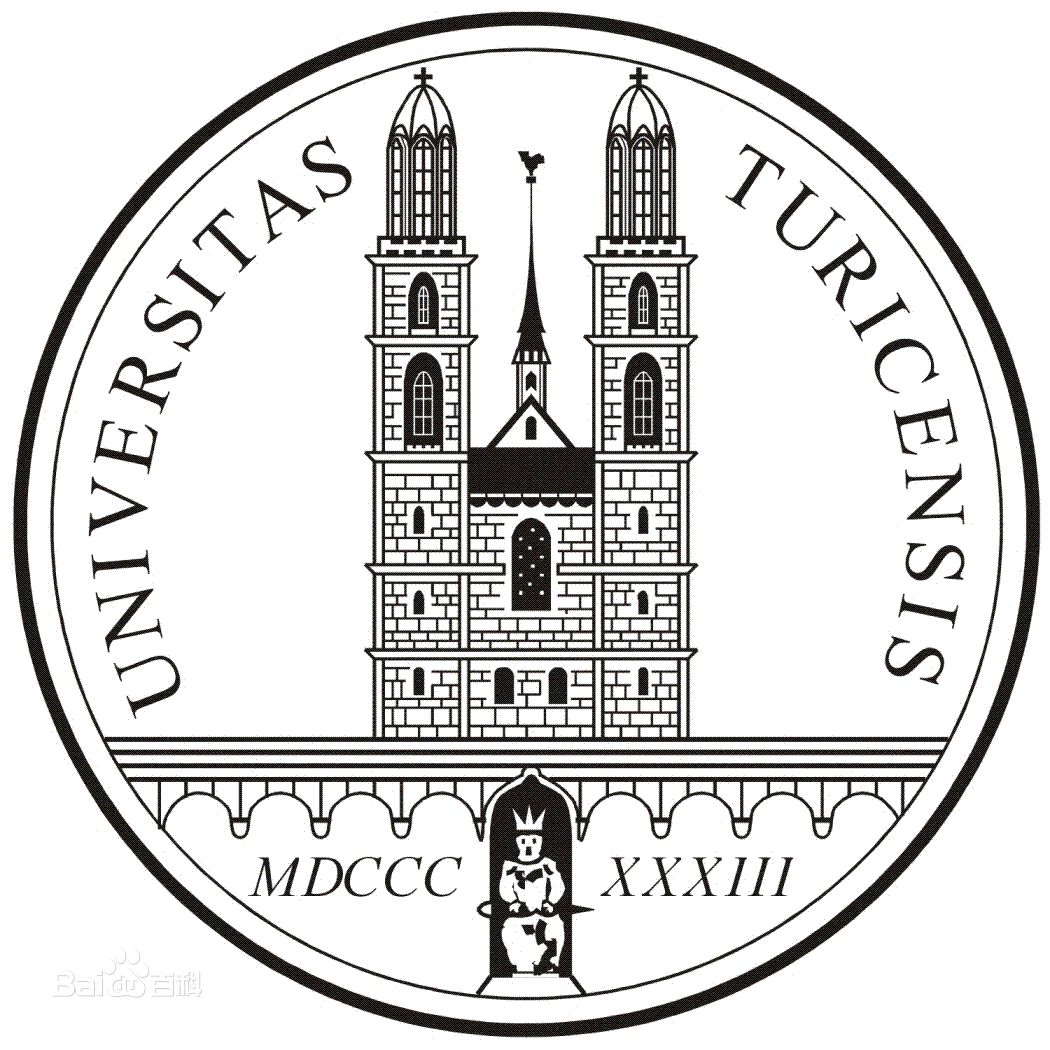
University of Zurich

Harvard University

Colorado State University
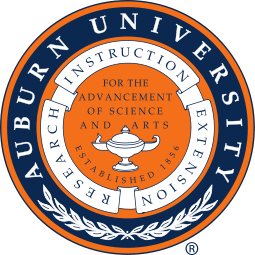
Auburn University

Yale University

Worcester Polytechnic Institute

Washington State University

Stanford University

University of Leipzig

Universidade da Beira Interior
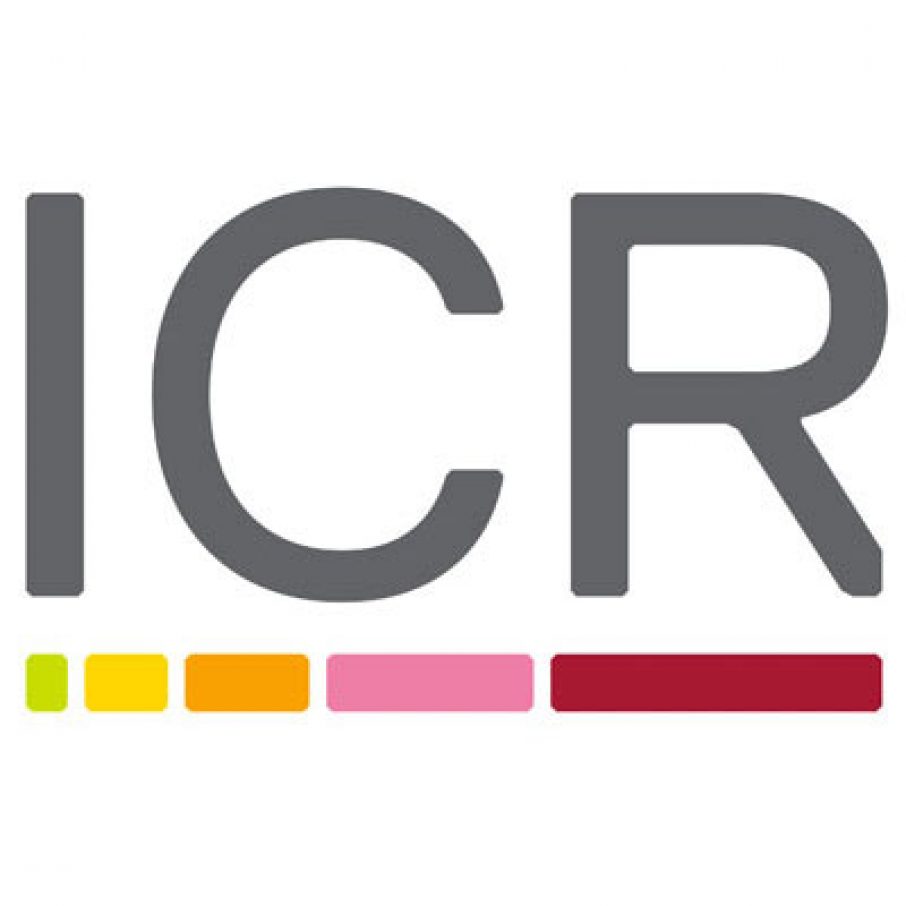
The Institute of Cancer Research

Heidelberg University

University of Amsterdam

University of Auckland

TsingHua University
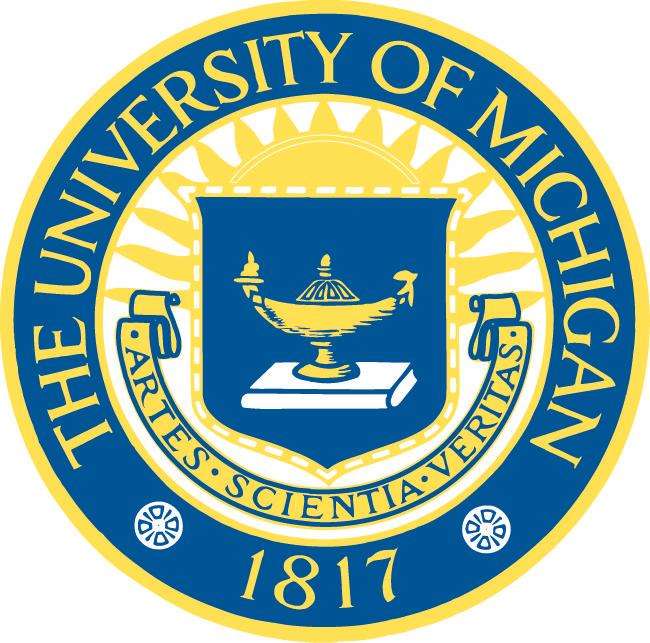
The University of Michigan

Miami University

DRURY University
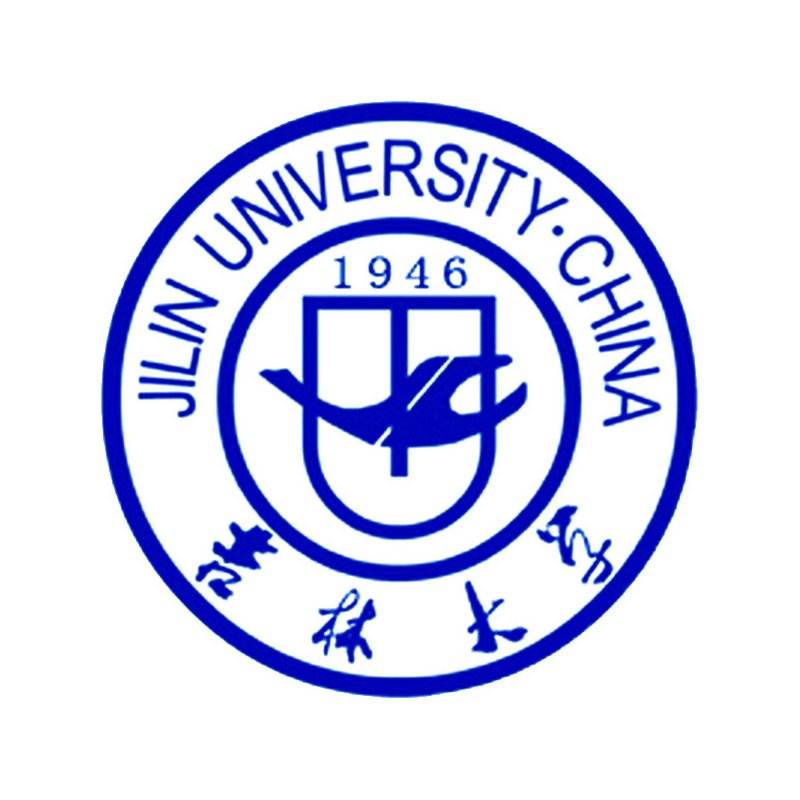
Jilin University

Fudan University

Wuhan University

Sun Yat-sen University

Universite de Paris

Deemed University

Auckland University

The University of Tokyo

Korea University
Micafungin is an antifungal agent [1].
Antifungal medicine is a pharmaceutical fungicide used to treat and prevent mycoses such as athlete's foot, ringworm, candidiasis (thrush), serious systemic infections such as cryptococcal meningitis, and others.
Micafungin is an antifungal agent known to inhibit 1,3-β-D-glucan synthesis in Candida albicans. In 13 out of 18 P. Aeruginosa isolates tested, micafungin significantly reduced biofilm biomass. In all 9 P. Aeruginosa isolates tested, micafungin decreased the expression of ndvB, which encoded the cell wall 1,3-β-D-glucan. Also, it decreased the expression of biofilm encoding genes for alginate and pellicles (algC and pelC, respectively) [1].
In a mouse model of septic A. fumigatus infection, micafungin (0.1 mg/kg) increased the survival rate of mice to 20%. When micafungin (0.1 mg/kg) combination with KB425796-C (32 mg/kg), the survival rate of mice increased to 100% in the 31-day post-infection period. While non-treated mice survived for only 6 days [2].
References:
[1]. Bazzi W, Sabra A, Zahreddine L, et al. The inhibitory effect of micafungin on biofilm formation by Pseudomonas aeruginosa. Biofouling, 2013, 29(8): 909-915.
[2]. Kai H, Yamashita M, Nakamura I, et al. Synergistic antifungal activity of KB425796-C in combination with micafungin against Aspergillus fumigatus and its efficacy in murine infection models. J Antibiot (Tokyo), 2013, 66(8): 479-484.
- Protoaescigenin
Catalog No.:BCC8240
CAS No.:20853-07-0
- Stigmastane-3,5,6-triol
Catalog No.:BCN4910
CAS No.:20835-91-0
- Ethyl 4-(rhamnosyloxy)benzylcarbamate
Catalog No.:BCN7635
CAS No.:208346-80-9
- Gentiopicroside
Catalog No.:BCN4909
CAS No.:20831-76-9
- Daunorubicin
Catalog No.:BCC4115
CAS No.:20830-81-3
- Digoxin
Catalog No.:BCN5359
CAS No.:20830-75-5
- ZM336372
Catalog No.:BCC3875
CAS No.:208260-29-1
- Zooxanthellabetaine A
Catalog No.:BCN1771
CAS No.:208256-89-7
- DAPT (GSI-IX)
Catalog No.:BCC3618
CAS No.:208255-80-5
- Nocistatin (bovine)
Catalog No.:BCC5703
CAS No.:208253-85-4
- Strictosidine
Catalog No.:BCN2641
CAS No.:20824-29-7
- Z-Ser(Bzl)-OH
Catalog No.:BCC2742
CAS No.:20806-43-3
- H-Tle-OH
Catalog No.:BCC2659
CAS No.:20859-02-3
- Primulic Acid 2
Catalog No.:BCC8237
CAS No.:208599-88-6
- Berberine
Catalog No.:BCN4911
CAS No.:2086-83-1
- Boc-His(Boc)-OH
Catalog No.:BCC3399
CAS No.:20866-46-0
- Ermanin
Catalog No.:BCN4912
CAS No.:20869-95-8
- (1R,1'S,3'R/1R,1'R,3'S)-L-054,264
Catalog No.:BCC7364
CAS No.:208706-12-1
- Saikosaponin D
Catalog No.:BCN1088
CAS No.:20874-52-6
- Testosterone benzoate
Catalog No.:BCC9166
CAS No.:2088-71-3
- Swertianin
Catalog No.:BCC8258
CAS No.:20882-75-1
- JWH 073
Catalog No.:BCC1674
CAS No.:208987-48-8
- Mangochinine
Catalog No.:BCN4913
CAS No.:209115-67-3
- Obtucarbamate B
Catalog No.:BCN3937
CAS No.:20913-18-2
Stability of micafungin sodium solutions at different concentrations in glass bottles and syringes.[Pubmed:26187166]
Int J Pharm. 2015 Aug 15;492(1-2):137-40.
Micafungin is a costly treatment and packaging of 50 mg or 100 mg bottles only are available, while doses lower than 5 mg and 20 mg are often necessary in neonates and paediatrics patients, respectively. The stability of Micafungin sodium in polypropylene syringes and glass bottles was studied at different concentrations. Solutions of micafungin diluted with NaCl 0.9% were prepared in glass bottles (20 and 10 mg/mL) or syringes (1 and 0.5 mg/mL) and stored at 25 degrees C, 60% humidity (RH), in the dark (ICH conditions). Solutions were also exposed to heat (70 degrees C) or alkaline solution (NaOH) in order to force degradation. Samples were analysed at days 1, 5, 8 (for bottles) and also 15 (for syringes) after the preparation and assayed in triplicate. Stability was studied using a stability-indicating high-performance liquid chromatographic method. Syringes stored at 25 degrees C retained over 90% of their initial concentration over the study period. Temperature and alkaline conditions had significant effect on the stability of micafungin, leading to apparition of degradation products. Moreover, sub visible particles were in the specification of the European Pharmacopeia along 15 days. To conclude, micafungin diluted in NaCl 0.9% and stored in polypropylene syringes was chemically stable for at least 15 days at 25 degrees C in the dark.
Development and validation of a stability-indicating high performance liquid chromatographic (HPLC) method for the determination of related substances of micafungin sodium in drug substances.[Pubmed:24284389]
Int J Mol Sci. 2013 Oct 24;14(11):21202-14.
An isocratic, sensitive and stability-indicating high performance liquid chromatographic (HPLC) method for separation and determination of the related substances of Micafungin sodium was developed. The chromatographic separation was achieved on Agilent Zorbax SB-C18 column (250 x 4.6 mm, 5 mum). Forced degradation study con fi rmed that the newly developed method was speci fi c and selective to the degradation products. The performance of the method was validated according to the present ICH guidelines for speci fi city, linearity, accuracy, precision and robustness. Regression analysis showed correlation coefficient value greater than 0.999 for Micafungin sodium and its six impurities. Limit of detection of impurities was in the range of 0.006%-0.013% indicating the high sensitivity of the newly developed method. Accuracy of the method was established based on the recovery obtained between 98.2% and 102.0% for all impurities. RSD obtained for the repeatability and intermediate precision experiments, was less than 1.0%. The method was successfully applied to quantify related substances of Micafungin sodium in bulk drugs.


